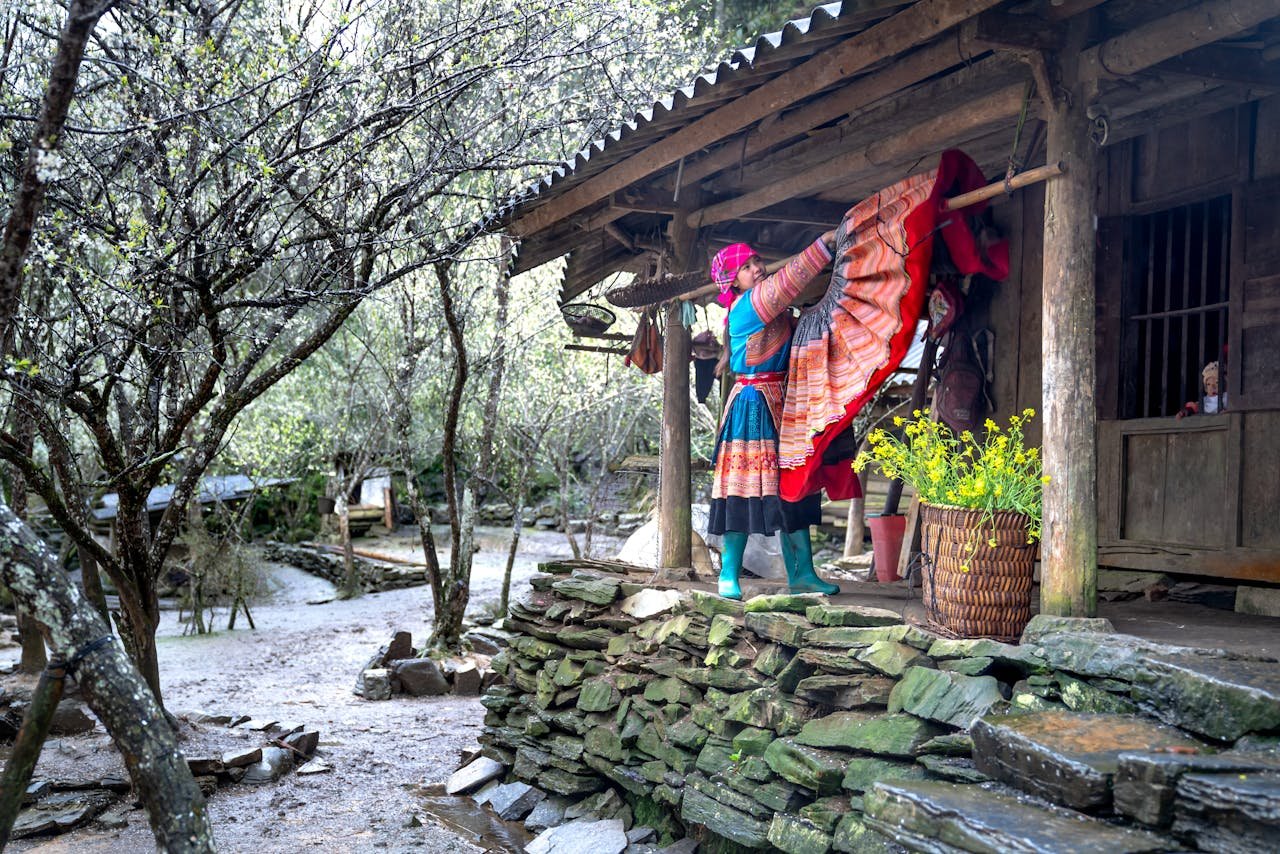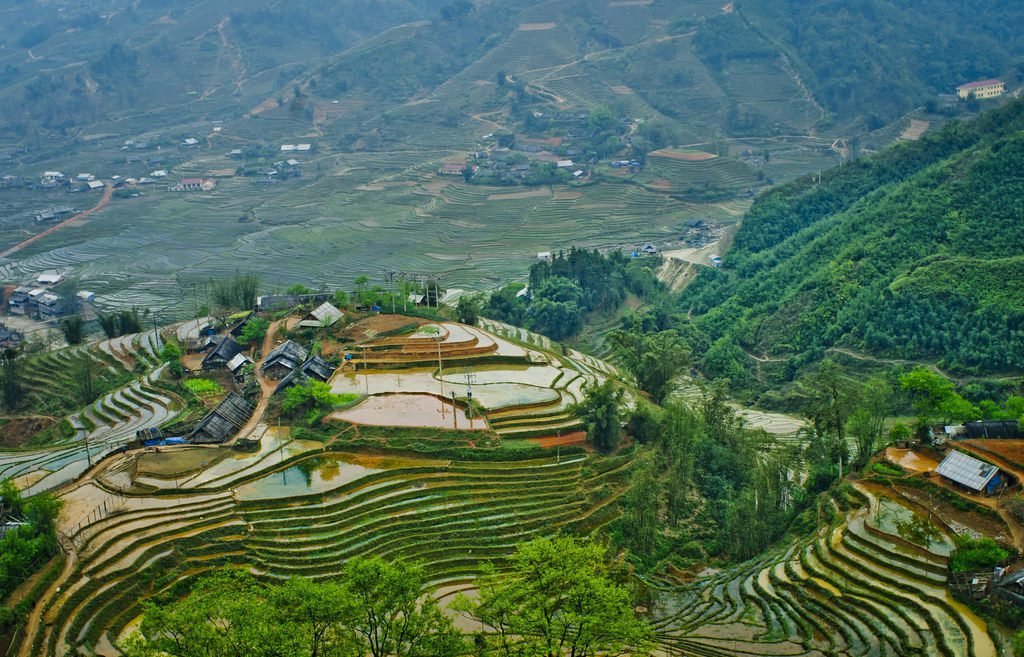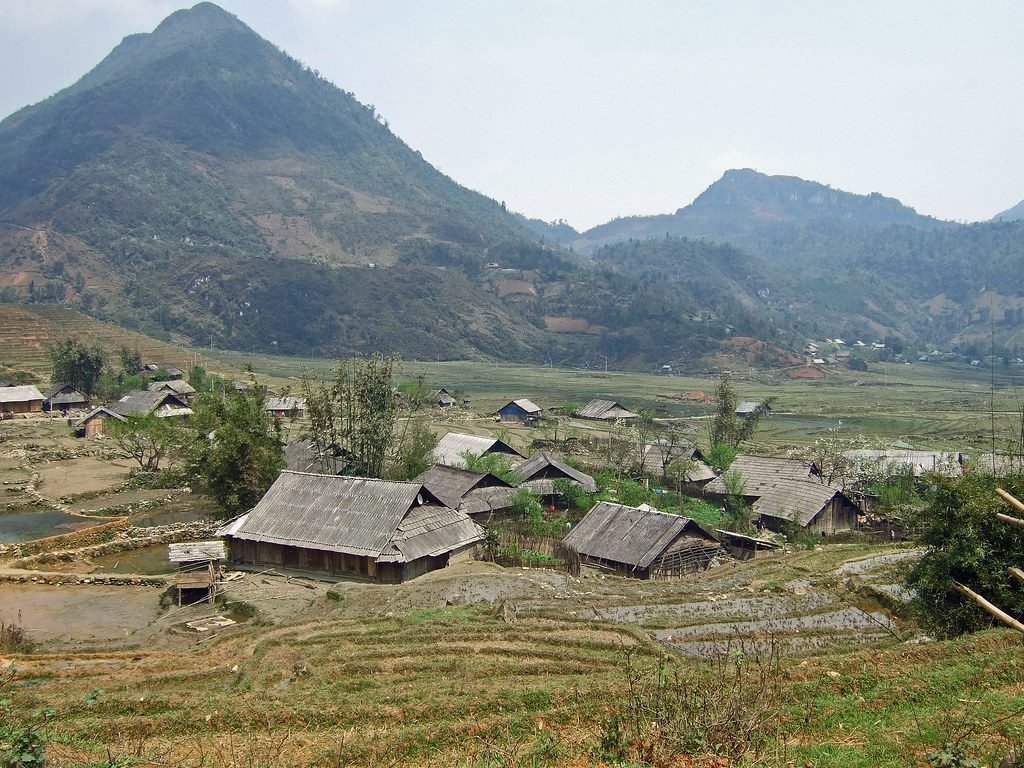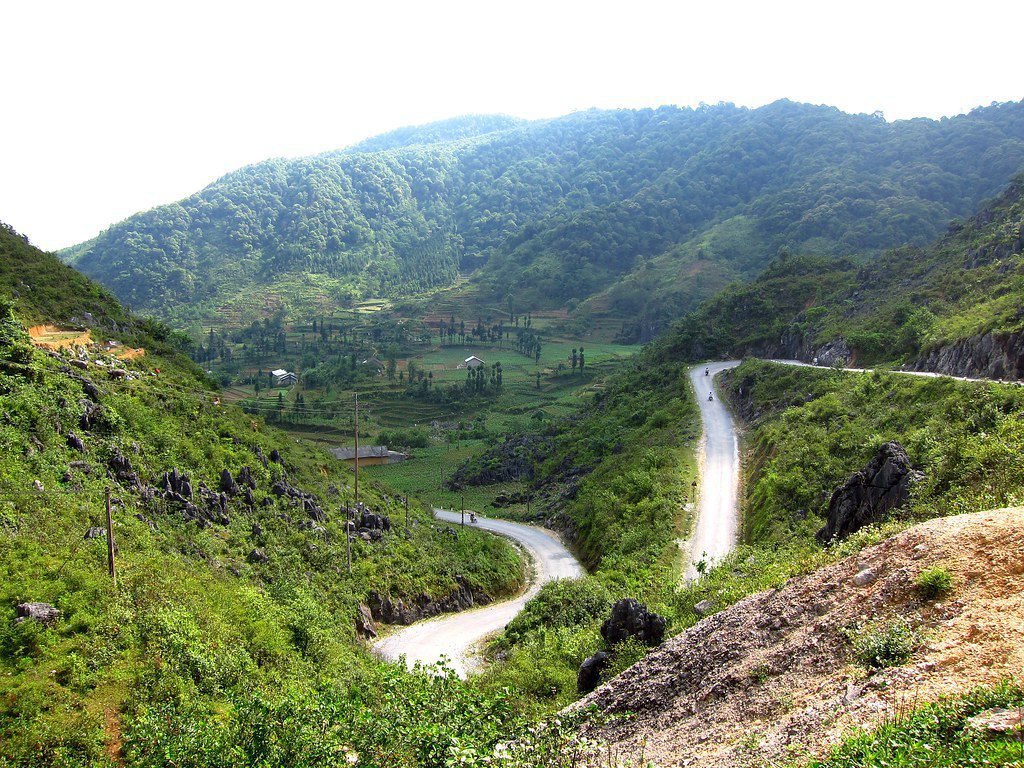Discover The Most Stunning Mountain Villages in Vietnam: Local Guide

The mist-shrouded peaks of northern Vietnam conceal some of Southeast Asia’s most captivating cultural treasures. According to the Vietnam National Tourism Administration, nearly 4 million international visitors explored Vietnam in early 2025 alone, with mountain regions seeing a significant surge in interest. These stunning mountain villages in Vietnam offer travelers an authentic glimpse into traditional ways of life that have remained largely unchanged for centuries, set against breathtaking natural backdrops of terraced rice fields and limestone karsts.
Why The Mountains on A Vietnam Vacation?
From the world-famous rice terraces of Sapa to the remote hamlets of Ha Giang, these mountain communities showcase the rich tapestry of Vietnam’s ethnic diversity and cultural heritage.
Each village tells its own unique story through architecture, crafts, cuisine, and customs that have been preserved through generations.

As travelers weave through the narrow paths connecting these villages, they are often greeted by vibrant markets filled with colorful textiles, handmade jewelry, and local produce, each item reflecting the distinct traditions of its makers.
The intricate patterns on the garments worn by the women of the Hmong, Tay, and Dao ethnic groups tell stories of their ancestry, while the fragrant aromas of traditional dishes like pho, banh cuon, and sticky rice waft through the air, inviting visitors to savor the local flavors.
In Ha Giang, the stunning landscapes of towering limestone cliffs and terraced fields create a breathtaking backdrop for the daily lives of the local people. Here, the Dong Van Karst Plateau Geopark stands as a testament to nature’s artistry, where the interplay of light and shadow reveals the rugged beauty of the terrain.
As the sun rises, casting a golden hue over the valleys, farmers can be seen tending to their crops, continuing an age-old practice that sustains their way of life.
Cultural festivals offer another glimpse into the vibrant life of these communities. Events such as the Hmong New Year and the Tay’s Fire Dance Festival bring together families and friends to celebrate with traditional music, dance, and feasting.
These gatherings not only reinforce social bonds but also serve as a platform to pass down folklore and rituals, ensuring that the younger generations remain connected to their heritage.
In essence, the mountainous regions of Vietnam not only offer stunning natural beauty but also serve as a living museum of cultural diversity. Each visit to these areas is a reminder of the importance of preserving the rich traditions and stories that define the spirit of the Vietnamese people.
The Enchanting Mountain Villages of Sapa
Nestled in the Hoang Lien Son mountain range, Sapa has long been the crown jewel of Vietnam’s northern highlands. As travel expert Ha Vuong notes, “The villages in Sapa are the main attractions for any travelers visiting the region.

They all set in a stunning landscape of mountains, forests and terraced ricefields, making them the main destinations for trekking tours and homestay experiences.”
Cat Cat Village: A Living Museum of H’mong Culture
Just 2 kilometers from Sapa Town, Cat Cat Village offers one of the most accessible glimpses into traditional mountain life. Formed in the mid-19th century by H’mong people, this picturesque settlement features wooden houses perched dramatically on mountain slopes.
The gentle descent from Sapa town to Cat Cat follows a pleasant trail through homes and fields. Women in the village maintain traditional crafts like cotton, linen, and cloth weaving, creating intricate textiles that tell stories of their cultural heritage.

Visitors can observe these ancient techniques firsthand and even purchase authentic handicrafts directly from the artisans.
A highlight of any visit to Cat Cat is the charming waterfall adjacent to a hydropower plant built by the French over a century ago. The cultural shows performed twice daily offer insight into traditional music and dance forms that have been preserved through generations.
Lao Chai and Ta Van: The Twin Jewels of Muong Hoa Valley
Approximately 7 kilometers from Sapa Town lies Lao Chai village, situated in what many consider the most beautiful valley in northern Vietnam.
Visible from Sapa Town or from the summit of Ham Rong mountain, this expansive settlement stretches across the valley floor in a patchwork of small hamlets.
Lao Chai is home to the region’s most spectacular rice terraces, which have earned recognition as a national beauty spot. These masterpieces of agricultural engineering transform the landscape with their sinuous curves, creating a living artwork that changes with the seasons.

Just beyond Lao Chai, Ta Van village shares the other half of the magnificent Muong Hoa valley. In the H’mong language, Ta Van means “big arc,” aptly describing its position cradled by the majestic Hoang Lien Son mountain range with the clear Muong Hoa stream flowing through its heart.
Ta Van has become a premier destination for overnight homestays, allowing visitors to immerse themselves fully in the rhythms of village life. Staying with local families provides authentic cultural exchanges and the opportunity to sample traditional cuisine prepared with fresh, local ingredients.
The trekking route connecting Sapa Town to Lao Chai and Ta Van offers some of Vietnam’s most spectacular mountain scenery. The trail winds along mountain slopes with panoramic views of bamboo forests and the valley below, making it a photographer’s paradise.
Hidden Gems: Ma Tra, Ta Phin, and Ban Ho Villages
For travelers seeking less frequented paths, the villages of Ma Tra, Ta Phin, and Ban Ho offer rewarding alternatives to Sapa’s more popular destinations.
Ta Phin village, located about 17 kilometers northeast of Sapa Town, is inhabited by both Dao and H’mong ethnic groups. The village is renowned for its beautiful natural landscape and the rich cultural traditions of the Red Dao people.

Dao women are particularly skilled at embroidery, creating intricate designs that have been passed down through generations. Nearby, Ta Phin cave features fascinating stalactite formations that add another dimension to the visitor experience.
Ban Ho village, situated about 30 kilometers from Sapa town, offers a glimpse into the culture of the Tay people. With a relatively small population compared to other ethnic groups in the region, this is the only village in Sapa inhabited primarily by Tay people.
The village sits in a small valley at the end of the Muong Hoa stream, requiring visitors to navigate a majestic winding road to reach it.
The traditional stilt houses of Ban Ho provide an authentic homestay experience where guests can enjoy special dishes unique to Tay cuisine.
These less-visited villages provide a more secluded experience for those looking to escape the crowds and discover the authentic charm of Vietnam’s mountain communities.
Ha Giang’s Remote Mountain Hamlets
While Sapa has long attracted travelers, the province of Ha Giang remains one of Vietnam’s last frontiers of untouched beauty. As noted by Hanoi Voyages, “Ha Giang, located in the northernmost part of Vietnam, is a hidden gem that offers breathtaking landscapes and a rich cultural heritage.”
Lo Lo Chai Village: Stepping into a Fairy Tale
Nestled at the foothills of the renowned Dragon Mountain in Lung Cu, Dong Van, Lo Lo Chai village captivates visitors with its otherworldly charm.
Located approximately 1 kilometer from Vietnam’s famous northernmost flagpole, this village has emerged as a top destination for those seeking authentic cultural experiences in Vietnam.
Lo Lo Chai serves as the cultural heart of the Lo Lo and Hmong ethnic groups, with over 90% of its residents belonging to the Lo Lo ethnic minority. The inhabitants have preserved their unique cultural heritage, including traditional values and customs that have remained largely unchanged for centuries.
Visiting Lo Lo Chai feels like stepping into a fairy tale world. Traditional houses with dark brown yin-yang tiles and gray stone fences create a distinctive architectural landscape. The walls of these homes, often 50 centimeters thick and made of earth, keep interiors warm throughout the year.
Women in colorful traditional attire can be seen weaving textiles, while skilled Lo Lo men practice wood carving techniques passed down through generations.
The triangle patterns adorning traditional clothing represent their ancient kingdom and showcase the artistic heritage of this remarkable community.
Dong Van and Lung Cu: Northern Frontier Villages
The town of Dong Van serves as the gateway to some of Vietnam’s most spectacular karst landscapes. Situated within the UNESCO-designated Dong Van Karst Plateau Geopark, this area features dramatic limestone formations that create an almost lunar landscape.

Dong Van offers the widest choice of accommodation in the region and serves as an excellent base for exploring surrounding villages.
The town itself preserves many traditional elements, with ancient houses constructed from clay bricks and tiles that have withstood the test of time.
Just 24 kilometers from Dong Van town lies Lung Cu, home to Vietnam’s northernmost point marked by an iconic flagpole. The journey to Lung Cu takes visitors through stunning landscapes characterized by rugged limestone mountains and verdant valleys.
From the flagpole, panoramic views extend across the border into China, creating a profound sense of standing at the edge of the nation.
Lung Cam Cultural Village, another highlight of the region, showcases the distinctive beauty of the rocky plateau with its endless mountain ranges and colorful flower gardens.
This cultural preservation area allows visitors to experience traditional homes and lifestyles in an authentic setting.
Planning Your Visit to Vietnam’s Mountain Villages
Experiencing Vietnam’s mountain villages requires thoughtful planning to ensure both comfort and cultural sensitivity. The following sections provide essential guidance for making the most of your journey.
Best Time to Visit Mountain Villages in Vietnam
The mountain regions of northern Vietnam experience distinct seasons, each offering unique perspectives on village life.
September to November and March to May generally provide the most pleasant weather conditions, with clear skies and moderate temperatures ideal for trekking and photography.
During these months, the terraced rice fields display their most vibrant colors, transitioning from emerald green to golden yellow as the rice ripens.
Winter months (December to February) bring cooler temperatures and occasional mist that creates ethereal landscapes, though higher elevations may experience frost.
This season offers the opportunity to witness special celebrations like Tet (Lunar New Year), when villages come alive with traditional festivities.
The summer months (June to August) coincide with the rainy season, bringing lush vegetation but also the possibility of heavy downpours that can make trekking challenging. However, this period offers the advantage of fewer tourists and the chance to see terraced fields at their most verdant.
Sustainable Tourism in Vietnam’s Mountain Communities
As interest in Vietnam’s mountain villages grows, so does the importance of responsible tourism practices. The influx of visitors brings economic opportunities but also challenges to traditional ways of life.
According to a recent study published in Science Direct, “Tourism social sustainability in remote communities in Vietnam” requires balancing economic benefits with cultural preservation.
The research emphasizes the importance of community involvement in tourism development to ensure that economic gains benefit local populations while preserving cultural integrity.
Travelers can contribute to sustainable tourism in Southeast Asia by:
- Choosing locally-owned accommodations and homestays
- Purchasing handicrafts directly from artisans
- Respecting cultural customs and asking permission before taking photographs
- Using local guides who can provide cultural context and facilitate meaningful exchanges
- Minimizing environmental impact by avoiding single-use plastics and staying on designated trails
These practices help ensure that tourism supports rather than undermines the communities that make these destinations so special.
Essential Tips for an Authentic Mountain Village Experience
To fully appreciate the unique character of Vietnam’s mountain villages, consider the following recommendations:
Accommodation options range from basic homestays to more comfortable guesthouses. Homestays offer the most immersive cultural experience, allowing visitors to participate in daily activities and enjoy home-cooked meals featuring local specialties.
In larger villages like Ta Van and Dong Van, guesthouses provide additional comfort while still maintaining local character.
Transportation to remote villages often involves a combination of methods. While major towns like Sapa and Ha Giang are accessible by bus or private car from Hanoi, reaching smaller villages typically requires motorbikes, jeeps, or trekking.
Many visitors opt for guided tours that handle logistics while providing cultural insights.

Cultural etiquette is essential for respectful interactions. Dress modestly, particularly when visiting homes or religious sites. Remove shoes before entering someone’s home, and accept food or drink when offered as a gesture of hospitality.
Learn a few basic phrases in Vietnamese or local dialects to facilitate connections with villagers.
Packing considerations should include layers of clothing for variable mountain weather, sturdy walking shoes, rain protection, and basic first aid supplies. Cash is essential as ATMs are scarce in remote areas, and credit cards are rarely accepted in villages.
For more detailed information on where to stay, check our Vietnam Accommodation Guide for options ranging from authentic homestays to comfortable lodges.

Featured Snippet: Top 5 Most Stunning Mountain Villages in Vietnam
For travelers seeking the most picturesque and culturally rich experiences, these five villages stand out among Vietnam’s mountain communities:
- Lao Chai (Sapa): Home to Vietnam’s most spectacular terraced rice fields, recognized as a national beauty spot. The H’mong inhabitants maintain vibrant cultural traditions against the backdrop of the Hoang Lien Son mountains.
- Ta Van (Sapa): Sharing the magnificent Muong Hoa valley with Lao Chai, Ta Van offers premier homestay experiences and easy access to trekking routes. The village name means “big arc” in the H’mong language.
- Lo Lo Chai (Ha Giang): A fairy tale village with distinctive architecture and preserved cultural traditions of the Lo Lo ethnic minority. Located near Vietnam’s northernmost point, it offers a glimpse into one of the country’s most unique cultural enclaves.
- Lung Cam (Ha Giang): Set within the UNESCO-designated Dong Van Karst Plateau Geopark, this cultural village showcases traditional stone houses against a dramatic backdrop of limestone formations.
- Ban Ho (Sapa): A secluded village of the Tay ethnic minority featuring traditional stilt houses and distinctive cuisine. Located at the end of the Muong Hoa stream, it offers an off-the-beaten-path experience.
These villages have been selected based on their cultural authenticity, architectural preservation, natural setting, and the quality of visitor experiences they offer.
Embracing the Mountain Spirit
Vietnam’s stunning mountain villages offer far more than scenic beauty—they provide windows into living cultural traditions that have survived for centuries despite rapid modernization elsewhere.
From the world-famous terraced landscapes of Sapa to the remote frontier communities of Ha Giang, these villages embody the remarkable diversity and resilience of Vietnam’s ethnic minorities.

As tourism to these regions continues to grow—with Vietnam welcoming nearly 4 million international visitors in early 2025 alone—the balance between development and preservation becomes increasingly important.
By approaching these communities with respect and cultural sensitivity, travelers can contribute to sustainable tourism that benefits local populations while preserving their unique heritage.
Whether you’re trekking through the emerald rice terraces of Lao Chai, spending a night in a traditional stilt house in Ban Ho, or exploring the fairy tale stone villages of Ha Giang, the mountain communities of Vietnam offer experiences that will remain etched in your memory long after your journey ends.
Plan your visit to these stunning mountain villages in Vietnam today, and discover the hidden treasures that make this country one of Southeast Asia’s most captivating destinations.
FAQs About Vietnam’s Mountain Villages
What is the best time to visit mountain villages in Vietnam?
The optimal time to visit Vietnam’s mountain villages is during the dry seasons of September to November and March to May.
These periods offer pleasant temperatures, clear skies, and spectacular views of the terraced rice fields. September and October are particularly stunning as the rice terraces turn golden before harvest.
Winter (December-February) can be chilly but offers unique misty landscapes, while summer (June-August) brings lush greenery but also heavy rainfall.
How do I get to remote mountain villages in Vietnam?
Most mountain village journeys begin in Hanoi. For Sapa region, take an overnight train or bus to Lao Cai, then a shuttle to Sapa Town. From there, local guides can arrange transportation to villages via motorbike, jeep, or trekking routes.
For Ha Giang, direct buses run from Hanoi, with local transportation or guided tours necessary for reaching specific villages. The Ha Giang Loop is a popular motorbike circuit connecting many remote communities. Consider hiring local guides who understand terrain and cultural contexts.
Are homestays available in Vietnamese mountain villages?
Yes, homestays are widely available and offer the most authentic cultural experience. Villages like Ta Van in Sapa and Lo Lo Chai in Ha Giang have well-established homestay networks where visitors can sleep in traditional homes, often on raised platforms with provided bedding.
Facilities are typically basic but clean, with shared bathrooms and communal dining.
Hosts often involve guests in daily activities like cooking or farming.
Prices range from $10-30 USD per night, usually including home-cooked meals featuring local specialties.
What cultural etiquette should I observe when visiting ethnic minority villages?
Respectful behavior is essential when visiting ethnic minority villages. Dress modestly, covering shoulders and knees, particularly when entering homes or sacred spaces. Always ask permission before photographing people or religious sites. Remove shoes before entering homes.
Accept offered food or drink as refusal may cause offense. Learn basic greetings in Vietnamese or local dialects.
When purchasing handicrafts, respect the value of traditional artisanship rather than aggressive bargaining. Follow local guides’ advice regarding specific customs of different ethnic groups.
Which mountain village in Vietnam is best for photography?
Lao Chai and Ta Van villages in the Muong Hoa Valley offer spectacular photography opportunities with their expansive terraced rice fields that change colors seasonally. For architectural photography, Lo Lo Chai in Ha Giang features distinctive traditional houses with unique stone walls and yin-yang tiles.
Lung Cam Cultural Village provides dramatic limestone karst backdrops behind traditional homes.
Dawn and dusk provide magical lighting in all villages, while winter mornings often feature mist-shrouded landscapes. Consider visiting during local festivals for vibrant cultural photography opportunities.




